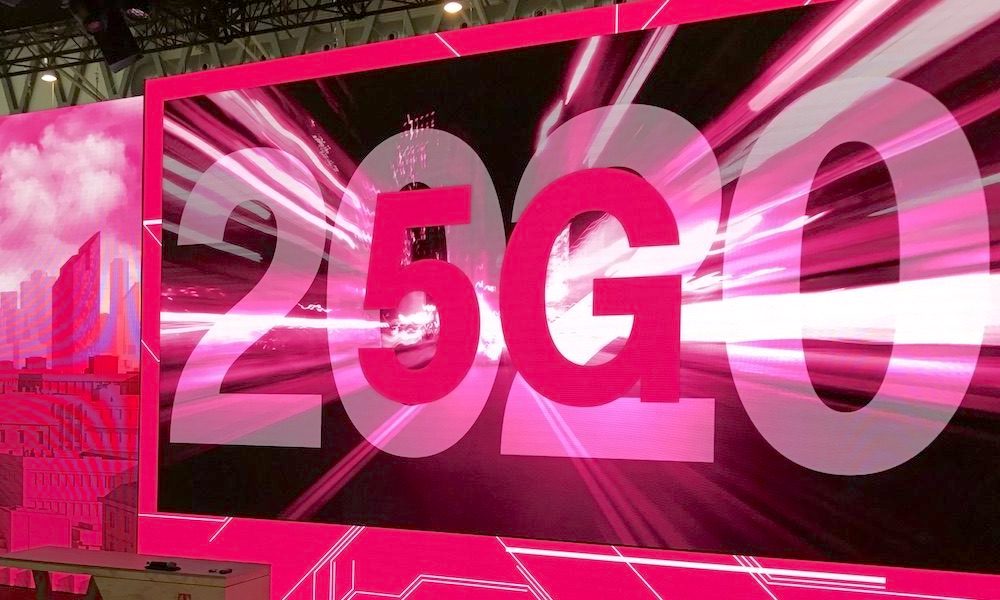T-Mobile Just Rolled Out Its Faster 5G Network to 81 New Cities
 Credit: T-Mobile
Credit: T-Mobile
Toggle Dark Mode
Although T-Mobile is clearly the undisputed leader in nationwide coverage, having the distinction of being the first U.S. carrier to offer 5G service in all 50 states, its focus on lower 5G frequencies has generally left it at the bottom when it comes to actual 5G speeds, but the good news is that’s finally starting to change.
When T-Mobile launched its nationwide 5G network late last year, it naturally opted for the much longer range sub-6GHz 5G technology rather than the fast but limited mmWave.
However, as the moniker implies, sub-6GHz encompasses all frequencies below 6GHz, and in T-Mobile’s case, it opted to run its nationwide network on the 600MHz band.
If you’ve ever set up a dual-band Wi-FI network, you probably already know that 5GHz Wi-Fi is faster than 2.4GHz, but it also doesn’t travel as far, and doesn’t penetrate walls and other solid objects nearly as well.
This isn’t a phenomenon unique to Wi-Fi, but is rather simply a matter of physics. Higher frequencies always offer better speeds but poorer range.
So by going with 600MHz, T-Mobile was able to provide extensive coverage across the U.S., but it did so at the expense of maximizing 5G performance. To be clear, T-Mobile’s 5G is still faster than 4G LTE on every U.S. carrier, but it comes in at the very bottom when compared to the 5G services offered by its competitors.
Fortunately, thanks to T-Mobile’s merger with Sprint, the new T-Mobile has been working on expanding higher-speed 5G coverage. As you can see from the chart above, Sprint offered average 5G download speeds that were almost 2.5 times faster than T-Mobile’s, and of course Sprint is now a part of T-Mobile.
The key to Sprint’s better speeds is that it had rolled out its sub-6GHz 5G network using the faster 2.5GHz frequency bands, and while T-Mobile has been gradually shutting down Sprint’s 2.5GHz coverage since the merger closed earlier this year, it turns out it’s only been doing that so that it can reuse those frequencies for the new T-Mobile 5G network.
As a result of this, T-Mobile has just announced that its faster 2.5GHz 5G, which it calls “the mid-band flavour in its 5G layer cake” has just been expanded to a total of 81 new cities.
According to the announcement, this means that T-Mobile 5G customers from Los Angeles, California and Chicago, Illinois to Towson, Indiana and Bangor, Michigan will now be able to enjoy significantly faster 5G speeds.
T-Mobile reports that some places with the new 2.5GHz coverage boasting average download speeds of 300Mbps, and in some cases even peak speeds near 1Gbps.
2.5GHz 5G offers a solid compromise to the much shorter-range mmWave, which runs at frequencies above 30GHz, and therefore often can’t cover much more than a city block. While mmWave speeds can theoretically run above 1Gbps, 2.5GHz 5G can deliver more than enough performance for most mobile users’ needs.
T-Mobile also promises that these 81 cities are just the first step, noting that it’s on track to “light up 1,000 sites per month,” with 2.5GHz 5G expected to be available in “thousands of cities and towns” by the end of the year.
By all reports, Apple is on track to release its 5G iPhone lineup in October, and while it’s not yet clear which of the new models will support the faster mmWave technology used by Verizon, all models will almost certainly offer sub-6GHz coverage on the common 600MHz and 2.5GHz frequencies.
A full list of the cities with 2.5GHz 5G coverage can be found here.







